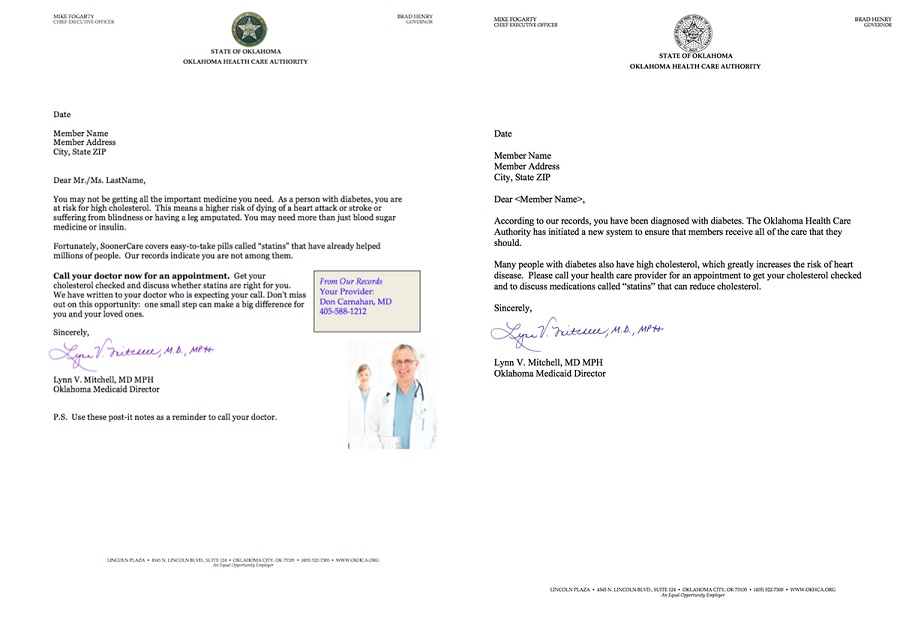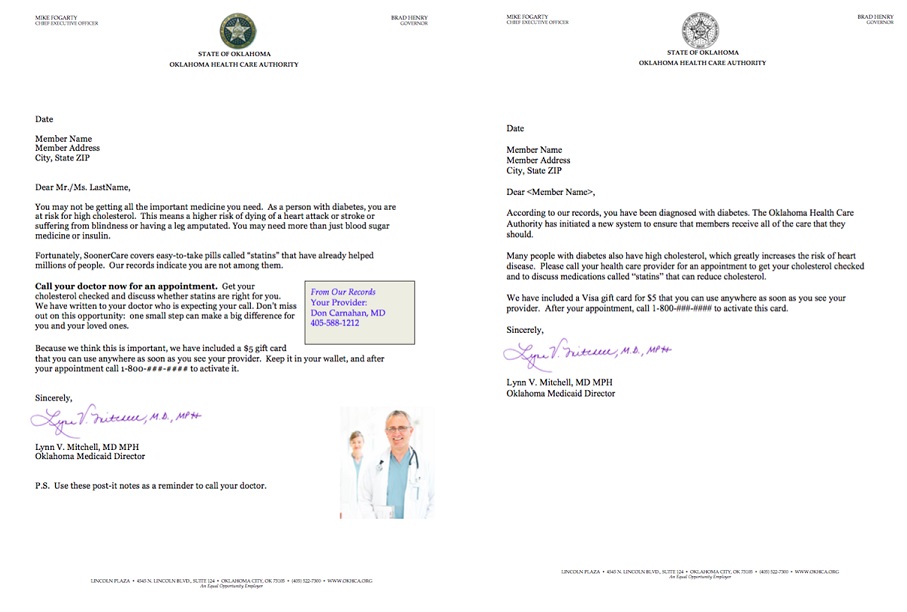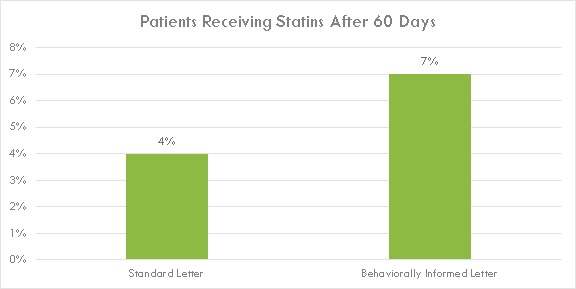
Are You Getting the Medication You Need?
Organization : ideas42
Project Overview
Project Summary
Patients enrolled in Oklahoma’s SoonerCare program were sent redesigned letters reminding them to consult their doctor about incorporating statins into their treatment.
Impact
After 60 days, individuals sent the redesigned reminder letters were 3 percentage points more likely to have received statin medication than those sent a standard letter (7% vs. 4%).
Challenge
Statin use is a highly effective way of managing chronic diseases such hypertension and diabetes that make up 70% of health care spending. Despite the low risk, low cost, and potentially high benefits of statins, many patients do not use them.
Design

Redesigned (left) and standard (right) letters
Researchers worked with Oklahoma’s SoonerCare program to redesign a letter encouraging patients to ask their doctor if they would benefit from taking statins. The new behaviorally informed letter used stronger persuasive language than the original to encourage recipients to use statins. The letter was redesigned to make key information more salient: important sentences with follow-up steps were bolded and a post-script was added to draw recipients’ attention to a set of post-it notes included in the letter reminding them to consult their doctor.
Patients were either sent the behaviorally redesigned letter and a magnetized set of post-it notes reminding them to consult their doctor, the standard letter along with a $5 gift card that could be activated after visiting their doctor, or both the redesigned letter and the gift card.

Redesigned (left) and standard (right) letters with the enclosed $5 gift card
Impact

A randomized evaluation found that the redesigned letter got statins into patients’ hands more quickly than the standard letter. After 60 days, patients who were sent the redesigned letter were 3 percentage points more likely to have received statins than patients who were sent the standard letter. In contrast, a $5 gift card was not found to have any impact on patients’ procurement of statins.
Implementation Guidelines
Inspired to implement this design in your own work? Here are some things to think about before you get started:
- Are the behavioral drivers to the problem you are trying to solve similar to the ones described in the challenge section of this project?
- Is it feasible to adapt the design to address your problem?
- Could there be structural barriers at play that might keep the design from having the desired effect?
- Finally, we encourage you to make sure you monitor, test and take steps to iterate on designs often when either adapting them to a new context or scaling up to make sure they’re effective.
Additionally, consider the following insights from the design’s researcher:
- To make the reminder salient even after the initial letter is opened, a magnetic post-it note was included with the letter. Recipients could place the post-it note in a convenient location to serve as a continual reminder.
Project Credits
Researchers:
Katherine Baicker Contact Harvard T. H. Chan School of Public Health; National Bureau of Economic Research (NBER)


